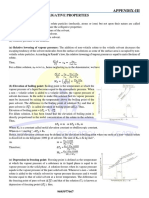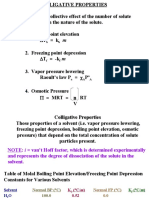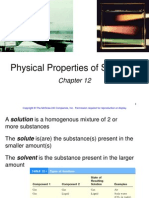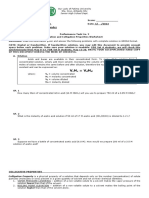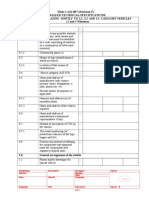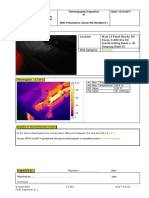0% found this document useful (0 votes)
48 views39 pagesColligative Properties Lecture Notes
Colligative properties of solutions depend on solute concentration rather than its identity, including vapor pressure lowering, freezing point depression, boiling point elevation, and osmotic pressure. Raoult's Law quantifies vapor pressure lowering, while changes in boiling and freezing points relate to solute concentration and the molal constants of the solvent. Osmosis involves solvent movement through a semipermeable membrane towards higher solute concentration, impacting biological systems and everyday scenarios.
Uploaded by
Lihle NhlahlenhleCopyright
© © All Rights Reserved
We take content rights seriously. If you suspect this is your content, claim it here.
Available Formats
Download as PDF, TXT or read online on Scribd
0% found this document useful (0 votes)
48 views39 pagesColligative Properties Lecture Notes
Colligative properties of solutions depend on solute concentration rather than its identity, including vapor pressure lowering, freezing point depression, boiling point elevation, and osmotic pressure. Raoult's Law quantifies vapor pressure lowering, while changes in boiling and freezing points relate to solute concentration and the molal constants of the solvent. Osmosis involves solvent movement through a semipermeable membrane towards higher solute concentration, impacting biological systems and everyday scenarios.
Uploaded by
Lihle NhlahlenhleCopyright
© © All Rights Reserved
We take content rights seriously. If you suspect this is your content, claim it here.
Available Formats
Download as PDF, TXT or read online on Scribd
/ 39










